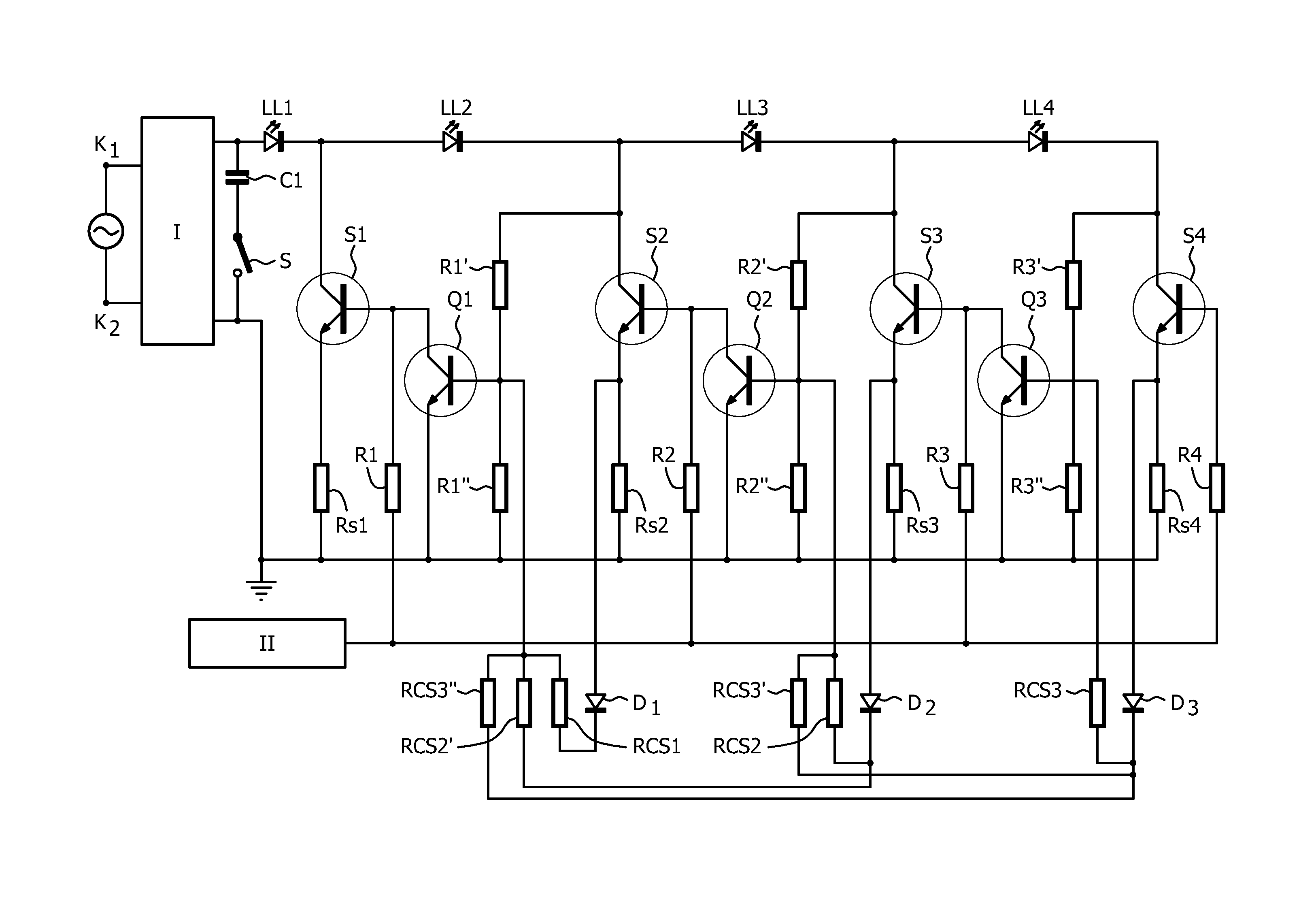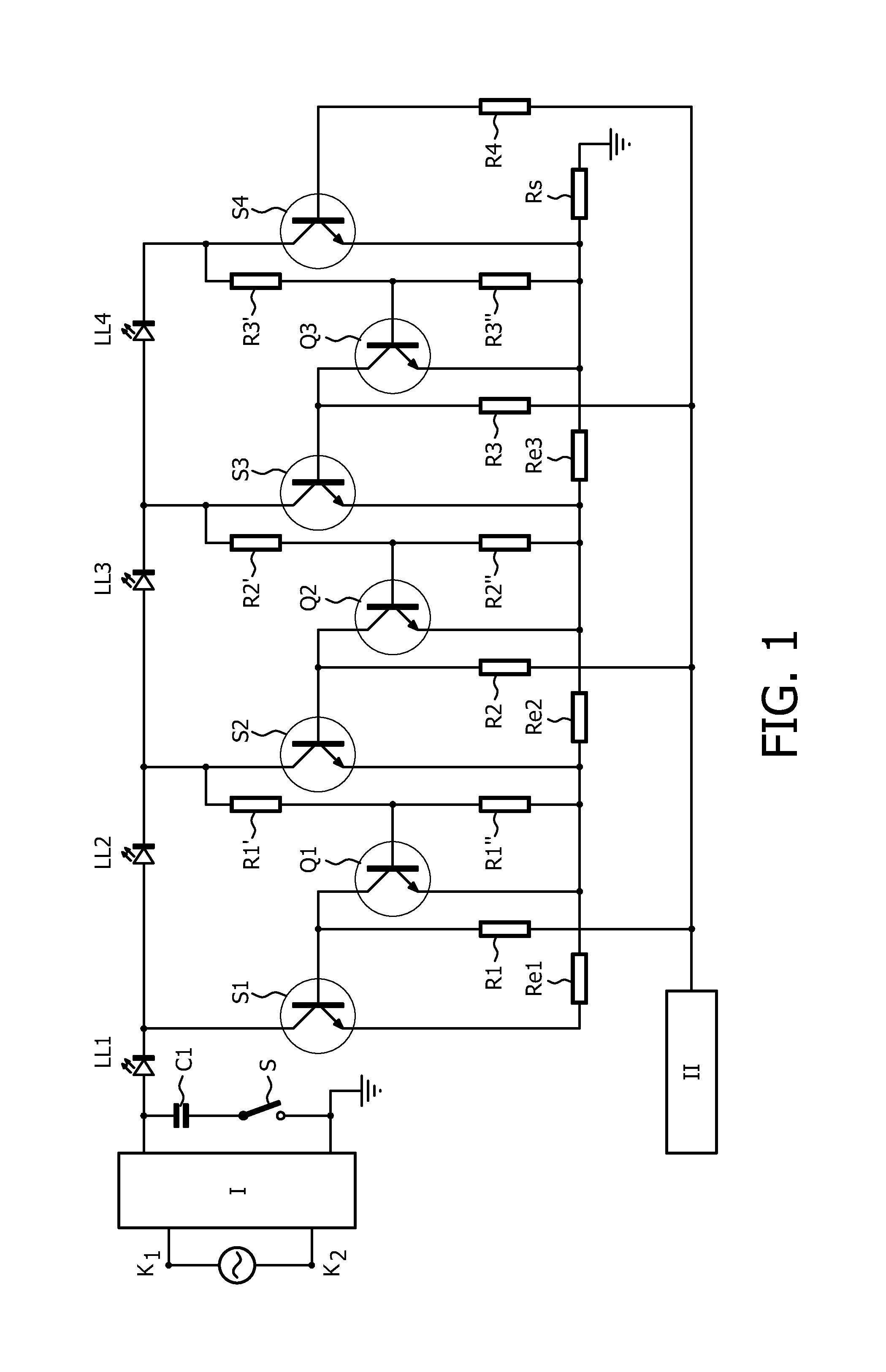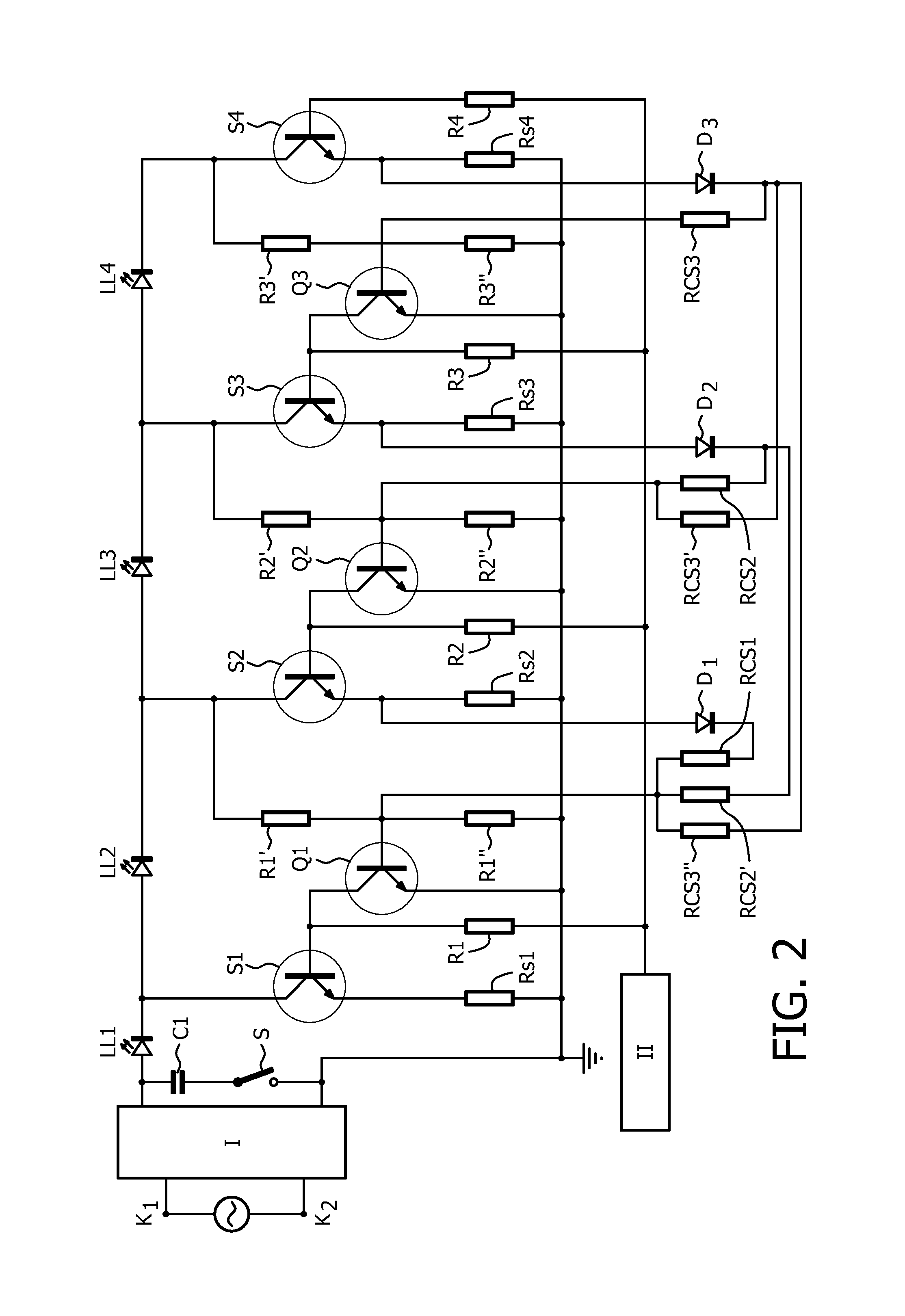LED light source
a technology of led light source and led load, which is applied in the direction of electroluminescent light source, electric lighting source, and use of semiconductors. it can solve the problems of reducing circuit efficiency, affecting the sense of current signal, and affecting the effect of circuit efficiency
- Summary
- Abstract
- Description
- Claims
- Application Information
AI Technical Summary
Benefits of technology
Problems solved by technology
Method used
Image
Examples
Embodiment Construction
[0034]In FIGS. 1, K1 and K2 are respectively a first and a second input terminal for connection to a supply voltage source supplying a low frequency AC supply voltage with frequency f, such as the European or American mains voltage. Circuit part I is a rectifier for rectifying the low frequency AC supply voltage.
[0035]Output terminals of the rectifier are connected by means of a series arrangement of a capacitor C1 and a switch S.
[0036]LL1, LL2, LL3 and LL4, transistor S4 and resistor Rs together form a series arrangement comprising N LED loads coupled between a first and a second output terminal of the rectifier. Transistor S1 together with resistor Re1 form a first control string. Similarly, transistor S2 and resistor Re2 form a second control string, transistor S3 and resistor Re3 form a third control string, and transistor S4 and resistor Rs form a fourth control string.
[0037]The transistors can for instance be unipolar transistors, bipolar transistors, Darlington transistors or...
PUM
 Login to View More
Login to View More Abstract
Description
Claims
Application Information
 Login to View More
Login to View More - R&D
- Intellectual Property
- Life Sciences
- Materials
- Tech Scout
- Unparalleled Data Quality
- Higher Quality Content
- 60% Fewer Hallucinations
Browse by: Latest US Patents, China's latest patents, Technical Efficacy Thesaurus, Application Domain, Technology Topic, Popular Technical Reports.
© 2025 PatSnap. All rights reserved.Legal|Privacy policy|Modern Slavery Act Transparency Statement|Sitemap|About US| Contact US: help@patsnap.com



